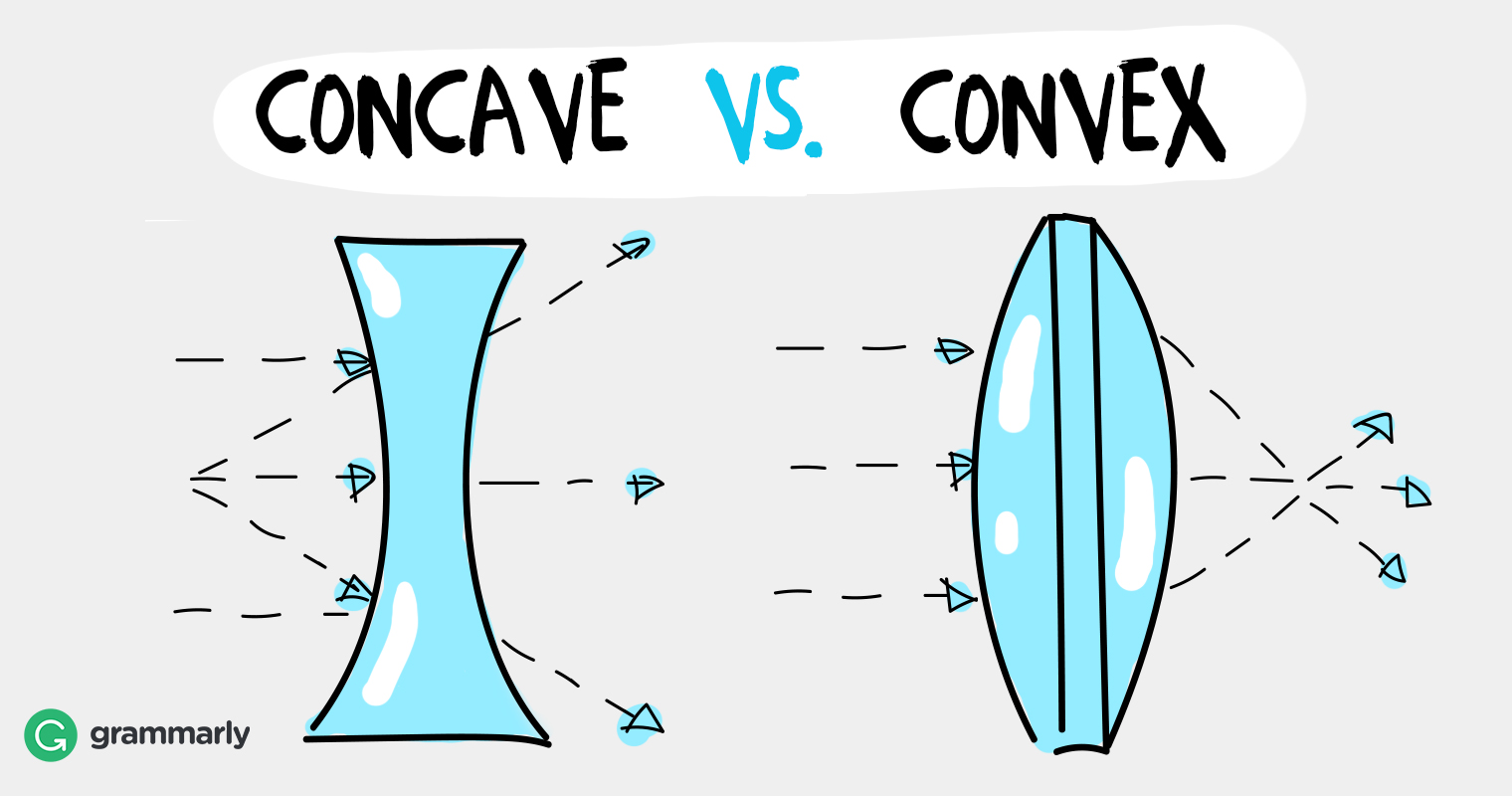
- Concave describes shapes that curve inward, like an hourglass.
- Convex describes shapes that curve outward, like a football (or a rugby ball).
If you stand in front of a concave mirror, your reflection will look taller. If you stand in front of a convex mirror, the opposite will happen—your reflection will appear shorter. Does this help you understand the difference between concave and convex?

Definition of Concave
Concave describes shapes that curve inward. The inside part of a bowl is a concave shape.
Concave can also be used as a noun. A concave is a surface or a line that is curved inward. In geometry, it is a polygon with at least one interior angle greater than 180°.
Definition of Convex
A convex shape is the opposite of a concave shape. It curves outward, and its middle is thicker than its edges. If you take a football or a rugby ball and place it as if you’re about to kick it, you’ll see that it has a convex shape—its ends are pointy, and it has a thick middle.
Just like concave, convex can be used as a noun for a surface or line that curves outward, and it also has a use in geometry, where it describes a polygon with interior angles less than or equal to 180°.
How to Remember the Difference Between Concave and Convex
Finding a mnemonic device for concave is easy enough. There’s a “cave” in concave, and caves are inward curvatures. That doesn’t work as well for convex, but if you can recall what we said for concave, all you need to do is remember that convex is the exact opposite.
Concave vs. Convex: Examples
The post Concave vs. Convex appeared first on Grammarly Blog.
from Grammarly Blog
https://www.grammarly.com/blog/concave-vs-convex/
No comments:
Post a Comment